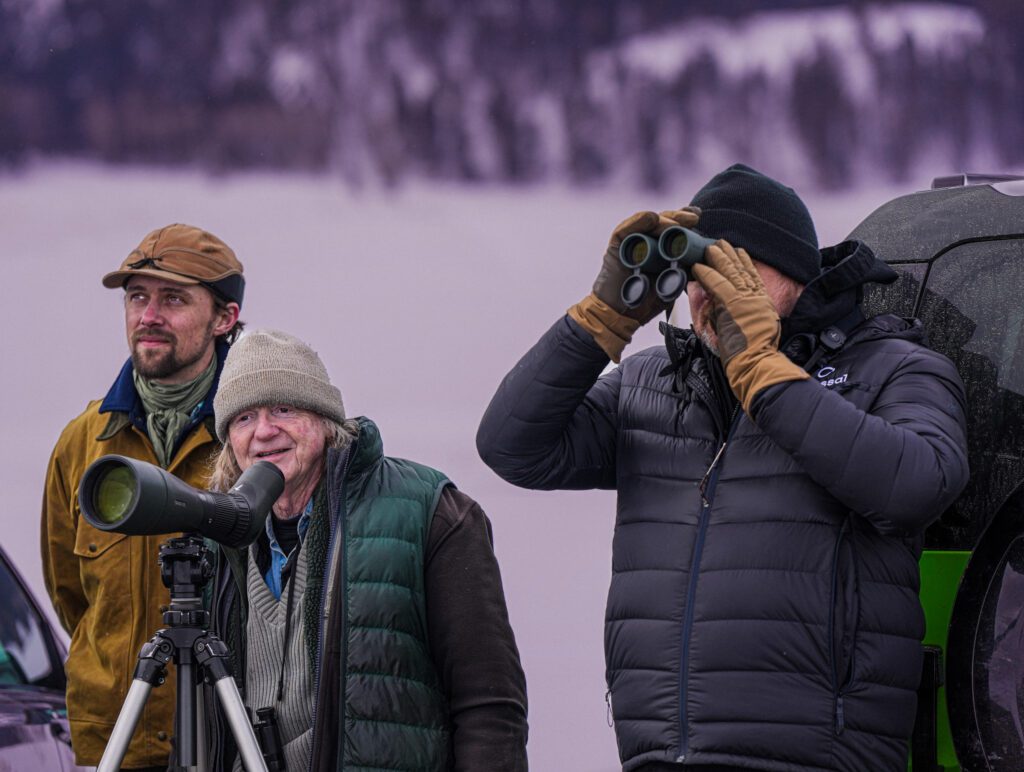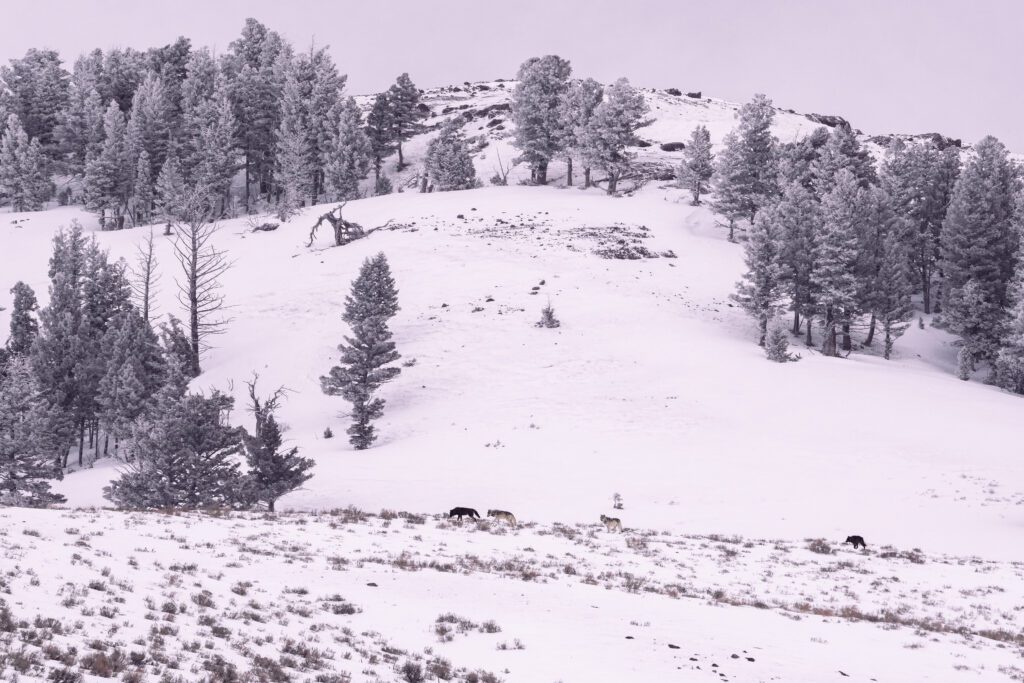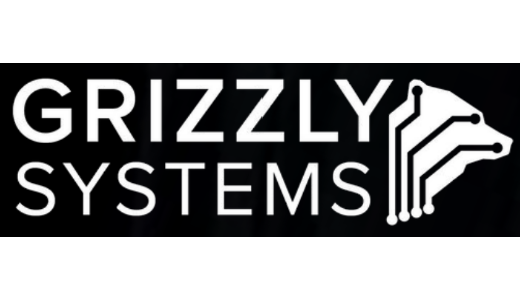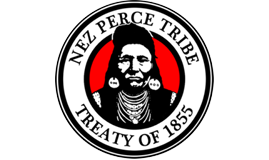By deploying next-generation integrated acoustic and video camera traps across Yellowstone National Park, the project will collect around-the-clock bioacoustics data from wolves and other wildlife that share wolf pack territories. These recordings will be analyzed by a sophisticated, modular software pipeline developed by the Colossal Foundation’s artificial intelligence team, which uses machine‑learning algorithms to parse massive vocalization datasets—an approach that can be replicated for multiple species inside Yellowstone and beyond.

Matt James, Chief Animal Officer, Colossal Biosciences, Cody Goldhahn, CTO & Co-Founder, Grizzly Systems, and Rick McIntyre, Author and Wolf Researcher at Yellowstone National Park monitoring Molly’s pack.
The custom-built models will automatically identify individual howls, chorus howls, and even gunshots, cluster calls by acoustic “fingerprint,” and extract key metrics—such as pack identity, size, and even pup presence—allowing for non‑invasive census, movement, and behavior studies. In time, the software will be able to provide deeper insights into wolf communication and social dynamics, all while employing innovative monitoring methods that minimize human impact.

Molly’s pack at Yellowstone National Park
As of January 2024, there were at least 100 wolves in Yellowstone National Park across numerous packs and many breeding pairs. Acoustic monitoring will let researchers track population trends, pack membership changes, territory use, and responses to environmental or human disturbances with minimal intrusion, fostering better coexistence between wolves and local communities.
Over the past year, a team of hardware and software engineers at Grizzly Systems Inc. has been developing advanced solutions like the GrizCam, which integrates long-lasting camera traps with built-in acoustic recorders. Their contributions have significantly advanced the project’s capacity to collect high-quality data suitable for comprehensive biological research. Jeffrey Reed, CEO of Grizzly Systems, Inc., said: “The mission of Grizzly Systems, Inc. is to advance field science, combat wildlife crime, deter livestock depredations, and build the digital wild, sparking curiosity, education and advocacy for the next generation of tech-savvy conservationists. AI is used to sort through this data at a fraction of the cost it would take to sort through manually. Together with Colossal and the biologists at the park, we’re deciphering the secrets of wolf communication. Nowhere else in the world is able to decode wolf ‘language’ like this.”
The Colossal Foundation’s support of the Wolf Project’s bioacoustics effort has led to the procurement of 25 additional GrizCam units that are to be deployed within the Greater Yellowstone Ecosystem. Data capture and recording will begin immediately upon deployment. Early successes in the project include the creation of a wolf-classifier, trained on a few-shot classifier previously developed by Colossal’s AI core, that can identify individual and chorus howls with over 92% accuracy.
The Colossal Foundation is also seeking to expand the impact of this technology beyond Yellowstone’s borders. Working alongside the Nez Perce Tribe—long‑time leaders in wolf management across Idaho—the project will deploy a pilot network of GrizCam units on tribal lands. By pairing technical training and data analysis support with the Tribe’s on-the-ground expertise and traditional ecological knowledge, the coalition will build local capacity for non-invasive wolf monitoring while honoring tribal sovereignty and deep cultural ties to the species.
“We spend our time and money on projects that we think will have a big impact for local stakeholders and in time, the whole of conservation,” said CEO and co-founder of Colossal Biosciences Ben Lamm. “By merging AI, acoustics, and rugged field hardware, we’re addressing some of the major challenges afflicting conservation and creating a scalable framework that can support coexistence wherever wolves roam.”






 Wolves play a crucial role in maintaining the ecological balance of the Greater Yellowstone Ecosystem, yet they face significant risks from human activities. Our support of this project combines mission‑critical conservation needs, such as remote monitoring and deterrence of wildlife conflict, with Colossal’s strength in frontier technologies. With this fusion, we can create a blueprint for AI‑driven wildlife protection worldwide.
Wolves play a crucial role in maintaining the ecological balance of the Greater Yellowstone Ecosystem, yet they face significant risks from human activities. Our support of this project combines mission‑critical conservation needs, such as remote monitoring and deterrence of wildlife conflict, with Colossal’s strength in frontier technologies. With this fusion, we can create a blueprint for AI‑driven wildlife protection worldwide. 